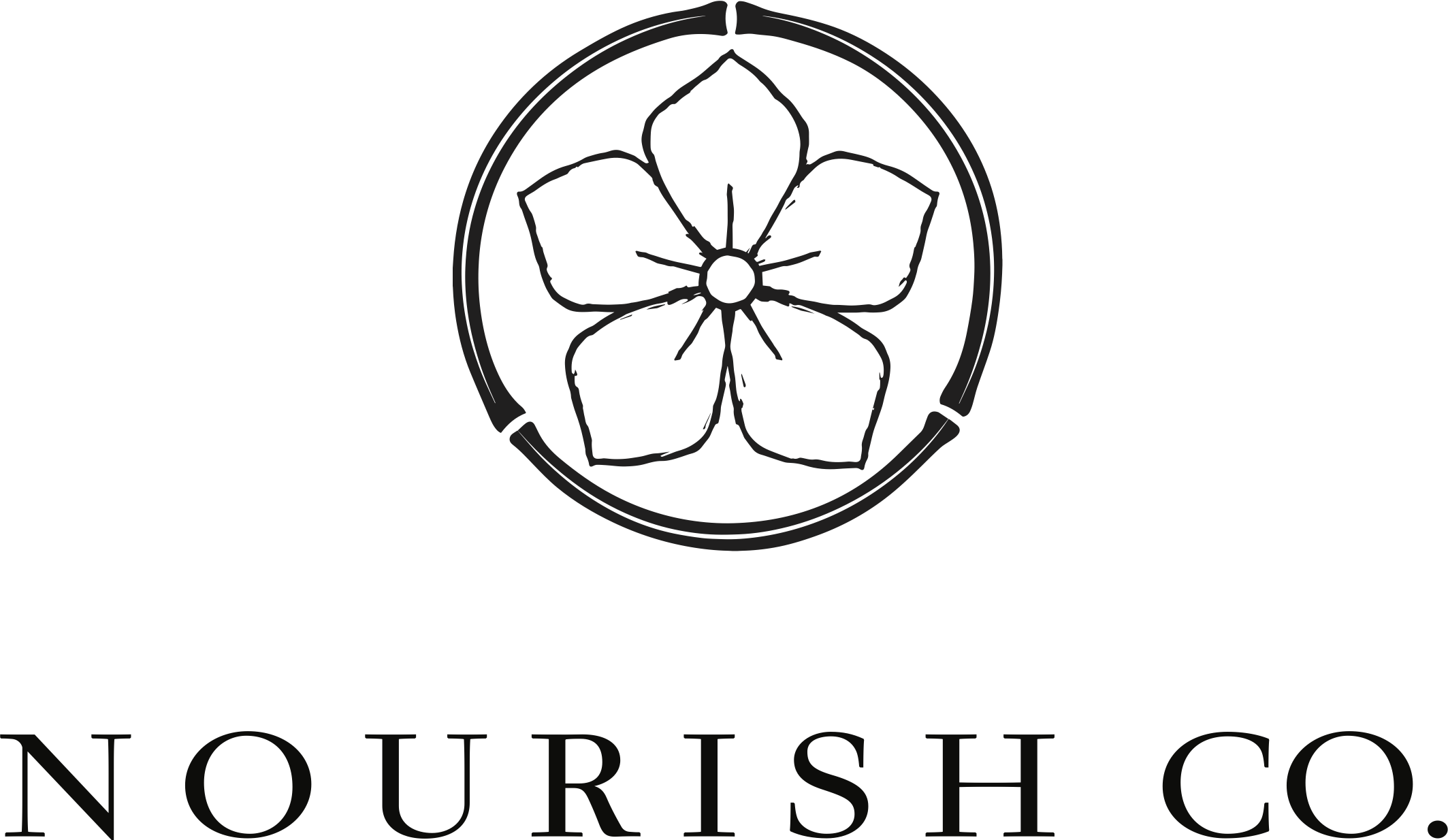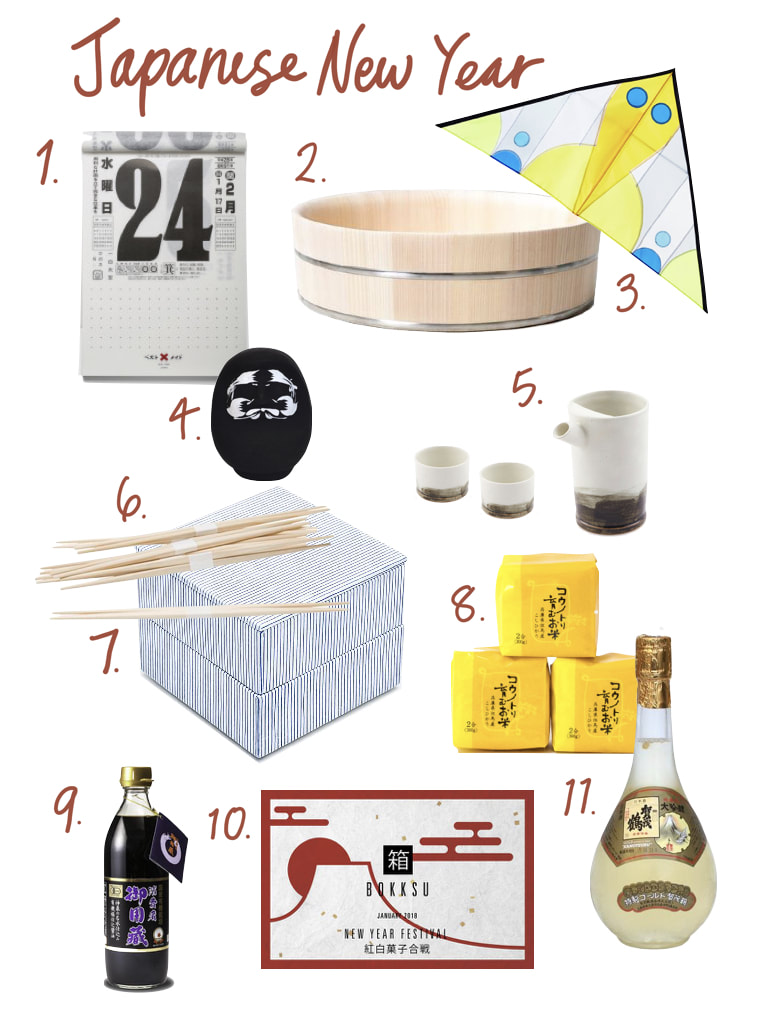Japanese New Year Products
January 1st is the most important holiday on the Japanese calendar. New Year's Day in Japan is spent with family celebrating traditions, many of which are centuries old and deeply rooted in Japanese culture. Ritual items like New Year's sake sets and ju-bako boxes for lucky foods have been passed down in families for generations...
My mother's Japanese family has always prided themselves on being very modern. She grew up in Yokohama, the second largest city outside of Tokyo. Yokohama is a huge port city, and I grew up hearing stories about how her father would always bring home treats from merchants all over the world. In many ways, she was very fortunate that her father was such a modern man. Her family set her free to do, be, and go wherever she wanted, as long as she was happy.
On the other hand, my mother took very few cultural traditions and heirlooms with her from Japan to the US when she moved here almost 40 years ago. In the last few years, my husband and I have been building our first home together. If you think beautiful, quality Judaica is hard to find here, wait till you try to find Japanese ritual items! For years, it's pretty much been impossible.
Thanks to a renewed interest in all things Japanese, especially food, design, and craftsmanship, that's slowly changing. Whether you're a fellow Japanese American like me, or a lover of Japanese design and culture, I hope you find something beautiful for your home here.
Note that most items on this list are not "traditional". Many are modern interpretations of traditional items. That's what Nourish is all about: Redefining cultural traditions in ways that are relevant and meaningful (and beautiful!)
- Best Made Co. Japanese Daily Calendar- Even when she was too old to remember to change it, my grandmother loved her Japanese daily calendar. Someone in the family would always remember to gift her one on New Year's Day. This traditional one is screen printed by hand in Japan. Every page includes weather, cultural and astrological information in Japanese (a reference key is included).
- Okada Seitaru Wooden Sushi Barrel- When I was growing up, my Mom and Bachan used wooden barrels like this one to serve sushi on special occasions like New Year's Day. This bowl is made of Japanese cypress called sawaraさわら, which has water-resistant and anti-microbial properties.
- Fredericks and Mae Kite- Takoage, or kite-flying, is a popular custom among children in Japan on New Year's Day. Traditionally, people few kits in the shape of Japanese demons as a symbolic way to get rid of evil. Nowadays, people fly regular kites.
- Modern Daruma- While this is not a traditional Japanese New Year tradition, I love daruma dolls and the way they bring good luck for new goals. Here's how I use daruma: Think of a goal you'd like to accomplish this year. Color in one of the eyes of the daruma. Throughout the year, when you see the daruma, visualize your goal. When your goal is accomplished, color in the other eye. Daruma is the Japanese pronunciation of "dharma".
- Nagatani-en Sake Pourer and Cups- While this not the traditional lacquer o-toso sake set for New Year's, this sake pourer and cups are made in the highly-regarded Iga-yaki pottery tradition (said to have originated in the 7th century!) I love the modern, unfinished, matte wabi-wabi look.
- Chopsticks- Traditionally, festive New Year's chopsticks are made of wood from the sacred willow tree. Since I haven't been able to find willow chopsticks in the US, I like to use these double-sided cedar sets from Korin. On New Year's, chopsticks are double-sided since one end is reserved for the gods present at the feast.
- Hasami Ju-Bako- These tiered boxes are a modern take on the traditional three-tiered box used to hold osechi-ryori, traditional New Year's day foods. They can also be used year-round to serve side dishes. They are available in traditional Japanese patterns that are transfer-printed onto each box by hand.
- Stork Natural Koshikari Rice- It's the most important holiday of the year, so why not use some special rice? This new crop of rice uses natural organisms and fertilizers to cultivate biodiversity in the rice fields of Toyooka, Japan.
- Yamaki Jozo Organic Nama Soy Sauce- I was lucky enough to visit Yamaki Jozo while I was in Japan in November. Most commercial soy sauce is made with already pressed soy beans, often waste other soy products. Instead, this 116-year-old, family-owned company uses whole organic soy beans harvested in Japan. This unpasteurized soy sauce is the most amazing I've tasted and is the perfect bottle for the first meal of the New Year.
- Bokksu- If you're a Japanese snack lover like I am, you'll love this special Japanese New Year Festival snack box by Bokksu, available January 2018.
- Tokusei Gold Sake- What could be more celebratory than a chilled bottle of junmai ginjo sake with two 24 carat gold flakes floating inside?

